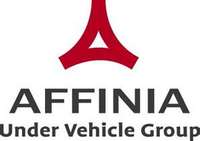Affinia Endorses New SAE Brake Rotor Standard
 |
ANN ARBOR, MI--Nov. 29, 2011: Affinia Group Inc., an innovative global leader in industrial grade products and services, has requested that the National Highway Traffic Safety Administration (NHTSA) adopt a federal vehicle safety standard for brake rotors based on the recently completed work by a subcommittee of the Society of Automotive Engineers (SAE).
"While we know that many aftermarket and original equipment manufacturers will voluntarily adopt the new SAE recommended practice concerning brake rotor integrity, creation of a NHTSA standard will assure universal adoption," said Terry McCormack, President and CEO of Affinia. "The excellent work of the SAE subcommittee represents a broad industry collaboration that addresses key technical issues and lays the groundwork for a NHTSA standard."
Affinia Group first discovered thin-walled rotors on the U.S. market in 2008 and took legal action to stop the importing of these products, which were subject to cracking and failure. In 2009, Affinia approached SAE, an international organization dedicated to voluntary quality standards, concerning formation of a subcommittee to develop an SAE recommended practice for assessing the structural integrity of brake rotors. Link Engineering, a multinational leader in the design and manufacture of precision test equipment, joined Affinia in providing technical support for the subcommittee, which included representatives of OEMs, Tier 1 and Tier 2 suppliers and aftermarket manufacturers.
The SAE subcommittee has recommended the adoption of SAE Recommended Practice J2928, which details dynamometer testing and performance criteria for assessing brake rotor crack initiation and propagation during high-energy brake applications. The proposed practice, which applies to light-duty vehicles, has passed peer review within SAE and final adoption is anticipated.
"The significant increase in aftermarket vehicle rotor suppliers and the proliferation of designs, materials and configurations have created the need for a standardized method to determine baseline standards for vehicle safety," McCormack said. "Our industry has taken the lead in addressing this important safety issue, and we are encouraging NHTSA to join us in assuring that everyone benefits from our collaborative efforts completed under the SAE banner."


